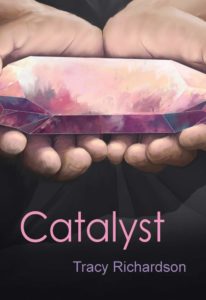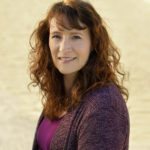“What Kids Can Do to Help the Environment and Why Does It Matter?”
I’m a science geek. I know it’s not everyone’s cup of tea, but it’s mine. I loved high school biology and have a Bachelor of Science degree in Biology. I think Bill Nye the Science Guy is cool – I mean who doesn’t? And now I follow Neal DeGrasse Tyson, who’s kind-of like everyone’s friendly astrophysicist, if that’s even a thing!
As part of my science geekiness I’m fascinated by the natural world around us. To me, there’s a magic and beauty to the world that science helps explain. My science background helps me to see how we’re all connected by an elegant design. This has led to my passion for the environment and it’s why I include environmental themes in my young adult novels.
Scientists have been warning us about the dangers of climate change for years. Science is a discipline. Researchers test their hypotheses again and again and revise their conclusions. It’s not an opinion. It’s based on the facts as we currently know them. To say that climate change isn’t real is to deny these facts.
There are so many people who are raising the alarm and young people are especially engaged. It’s their future we’re talking about. The future of the Earth that we live on. There is no second planet.
So, what exactly is Climate Change? What is causing it? Here’s the dictionary definition:
“a change in global or regional climate patterns, in particular a change apparent from the mid to late 20th century onwards and attributed largely to the increased levels of atmospheric carbon dioxide produced by the use of fossil fuels.”
Climate change refers to dramatic changes in global climate conditions, including weather phenomena, temperature, and sea levels. It’s caused by an over-abundance of greenhouse gases, mostly from fossil fuel emissions around the world.
It’s the carbon dioxide HUMANS are putting into the atmosphere by burning fossil fuels. What are fossil fuels? They are the non-renewable energy sources we take from the Earth. Coal, oil and natural gas.
Burning fossil fuel produces carbon dioxide which warms the planet. Accessing these fossil fuels also harms the planet. Fracking for natural gas, which is the environmental theme in my novel, Catalyst, pumps harmful chemicals into the Earth to extract the natural gas which poisons aquifers and has been proven to cause increased seismic activity – earthquakes – in fracked areas.
Climate change adversely impacts the delicate balance of Earth’s ecosystems. Global warming has been linked to dying coral reefs, dangerous new weather patterns such as stronger and more frequent hurricanes, droughts and fires, and the extinction of plant and animal species. Teens have probably seen pictures of emaciated polar bears in the Artic. Loss of the ice covering means they can’t swim far distances to hunt for seals. There is no where for them to get out of the water to rest and wait for seals. Polar Bears are one of many animals that are endangered.
The biggest impact that humans will see might be the rising ocean levels that are already threatening costal cities. Venice is under water for many more days than at any time in the past. Miami is already taking action to address rising sea levels by raising its roads and installing pumps to deal with increased flooding.
So, what can teens do to stop Climate Change? Reducing our Carbon Footprint is one thing we can do. What is a Carbon Footprint? Here’s the dictionary definition:
“the amount of carbon dioxide and other carbon compounds emitted due to the consumption of fossil fuels by a particular person, group, etc.”
So, what does that mean exactly? It essentially refers to our personal contribution to the carbon emissions that cause Climate Change. Here are some ways that each of us can have an impact:
- Plant Trees – Trees consume carbon dioxide and emit oxygen
- Change your mode of transportation – Bike to school or a friend’s house, carpool, take the bus or the train instead of driving or flying. Teen Climate Activist Greta Thunberg has chosen not to fly to reduce her carbon footprint.
- Eat a plant-based diet or have one ‘vegetarian day’ a week.
- Reduce household water waste – install efficient shower heads and toilets. Turn off the faucet when doing dishes or brushing your teeth.
- Upcycle and repurpose clothing and household items instead of buying new or discarding them.
- Reduce the amount of plastic packaging in the products you buy.
- Use cloth re-usable shopping bags.
- Eat locally produced food to reduce the ‘Food Miles’ it takes for your food to travel to you.
- Encourage your parents to tell their legislators to act on Climate Change legislation.
- Join environmental groups like the Sierra Club, the Natural Resources Defense Council or the World Wildlife Fund.
- Join the environmental club at your school or start one!
I’m sure you can tell I’m a bit passionate about this! I do feel like the tide is turning toward action on addressing environmental issues. We have so little time, but if we all do our part, we can have an impact.
Discussion Questions:
- What are natural resources? Can you name two or three examples?
- What’s a non-renewable energy source? What is a renewable one?
- What is a “Carbon Footprint”?
- What is Climate Change?
- What do you already know about Climate Change? How is it impacting the planet?
- What small steps can you and your siblings or classmates take today to help the environment?
Expected Publication: June 2nd, 2020 by Brown Books Publishing Group
About the Book: Marcie is spending her summer working on the archeological dig that her mother runs: Angel Mounds, a site of an ancient indigenous civilization. Soon after she arrives, she meet some intriguing individuals, and becomes wrapped up in a supernaturally-charged mission to save the planet from the destruction man has brought upon itself.
Marcie Horton has a sixth sense. Not in the “I see dead people” way, but . . . well, maybe a little. She feels a sort of knowing about certain things that can’t be explained-an intuition that goes beyond the normal. Then there was that one summer four years ago, when she connected with a long-departed spirit . . . But nothing that incredible has happened to Marcie since.
This summer, Marcie is spending time working at Angel Mounds, the archeological dig her mother heads, along with her brother, Eric, and his girlfriend, Renee. The dig is the site of an ancient indigenous civilization, and things immediately shift into the paranormal when Marcie and her teammates meet Lorraine and Zeke. The two mysterious dig assistants reveal their abilities to access the Universal Energy Field with their minds-something Marcie knows only vaguely that her brother has also had experience with. Marcie learns how our planet will disintegrate if action is not taken, and she and her team must decide if they are brave enough to help Lorraine and Zeke in their plan to save Mother Earth, her resources, and her history. It looks like the summer just got a lot more interesting.
About the Author: TRACY RICHARDSON wasn’t always a writer, but she was always a reader. Her favorite book growing up was A Wrinkle in Time by Madeleine L’Engle. In a weird way that book has even shaped her life through odd synchronicities. She has a degree in biology like Mrs. Murry, and, without realizing it, she named her children Alex and Katie after Meg’s parents. Tracy uses her science background in her writing through her emphasis on environmental issues, metaphysics, and science fiction. Tracy’s upcoming novel, “Catalyst” (Brown Books Publishing, June 2, 2020) is the second installment in the Catalysts series. To learn more about Tracy’s life and work, visit:
Thank you, Tracy, for tying science and your books together–bringing science knowledge to your readers!



Thanks for publishing my post!